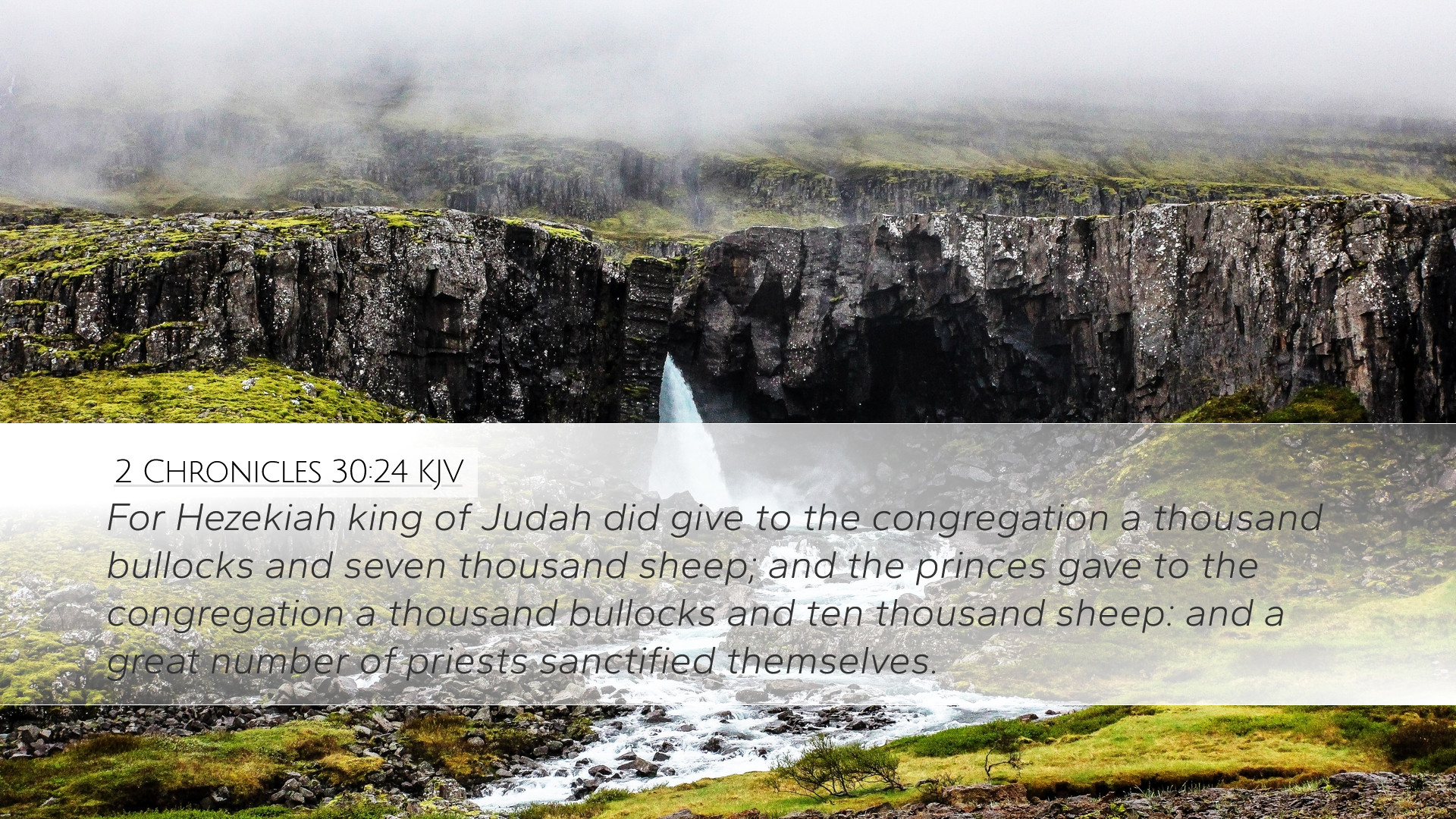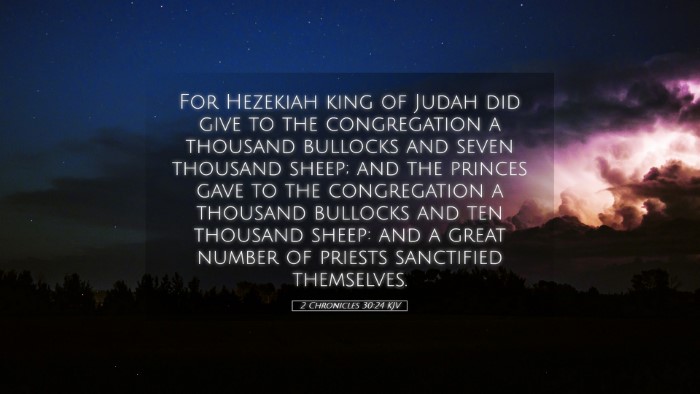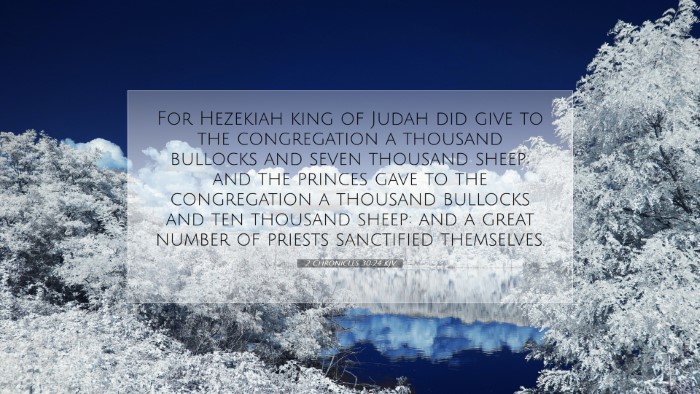Commentary on 2 Chronicles 30:24
Verse Reference: 2 Chronicles 30:24 - "For Hezekiah king of Judah did give to the congregation a thousand bullocks and seven thousand sheep; and the princes gave to the congregation a thousand bullocks and ten thousand sheep: and a great number of priests sanctified themselves."
Contextual Background
The reign of King Hezekiah represents a significant period of reform and renewal in Judah. After a series of kings who led Israel into idolatry, Hezekiah initiated a restoration of true worship, a return to the observance of the Passover, and a rededication to the service of the Lord. This verse appears in a broader context where Hezekiah desires to unite the people of Judah and Israel in worship, particularly during the Passover.
Theological Insights
The Offering of Sacrifices: The offerings mentioned serve multiple theological purposes. They not only signify the people's devotion to God but also reflect Hezekiah's leadership in re-establishing the significance of sacrificial worship. The magnitude of the offerings points to the collective response of the people to divine grace and their desire to restore covenantal relationship with God.
1. The King's Generosity
Matthew Henry remarks that Hezekiah's provision of sacrifices was a demonstration of his zeal for God’s worship. He opened his treasury, showcasing his commitment to the spiritual welfare of his people. The fact that he personally contributed a thousand bullocks and seven thousand sheep illustrates an exemplary model of leadership which encourages communal participation in worship.
2. The Princes' Involvement
Albert Barnes highlights the involvement of the princes, indicating that spiritual revival imbues all levels of leadership within the community. By matching Hezekiah’s gifts with substantial offerings of their own, the princes set a precedent for shared responsibility in worship, emphasizing that spiritual leadership should inspire action and devotion among the people.
3. The Sanctification of the Priests
The mention of the priests sanctifying themselves is a critical point. Adam Clarke notes that this act symbolizes a necessary preparation for holy service, aligning with the broader theology of holiness in worship. The priests’ commitment to sanctification reflects the understanding that before approaching God, there is a need for personal holiness—both an individual and communal aspect encountered in worship.
Historical Significance
Historically, this moment in the life of Judah is crucial as it marks a turning point where the nation collectively returns to God. The large offerings were not just logistical but deeply rooted in the cultural understanding of sacrifice as an act of dedication, highlighting the communal aspect of worship as expressed in the Mosaic law.
1. Restoration of Worship
This passage signifies a restoration—not just of worship but of identity for the entire community of Judah. The gathering together during Passover symbolized unity among divided tribes and reflected their return to a covenant faith.
2. The Role of the Community
The communal aspect of the celebration outlined here reveals important social dynamics at play. It creates a sense of belonging and reinforces societal values of worship as a shared experience, contrasting the prior fragmentation seen under previous kings.
Practical Applications
The richness of this verse offers profound implications for contemporary believers, pastors, and scholars alike.
- Church Leadership: Hezekiah’s example encourages church leaders to model generosity and commitment to worship, fostering environments where congregational participation is actively encouraged.
- The Importance of Preparation: The sanctification of the priests serves as a reminder for today’s church on the importance of spiritual readiness before engaging in corporate worship.
- Communal Worship: This passage underscores the significance of communal worship experiences, advocating for unity and shared practice among believers.
Conclusion
2 Chronicles 30:24 encapsulates a moment of divine obedience among the people of Judah, showcasing a profound sense of community revival initiated by their king. The generous offerings reflect a collective heart turned towards God’s glory, establishing a pattern for worship that resonates through the ages. In our own context, leaders and believers are invited to reflect on the attitudes of giving, preparation, and communal worship that Hezekiah exemplified.


